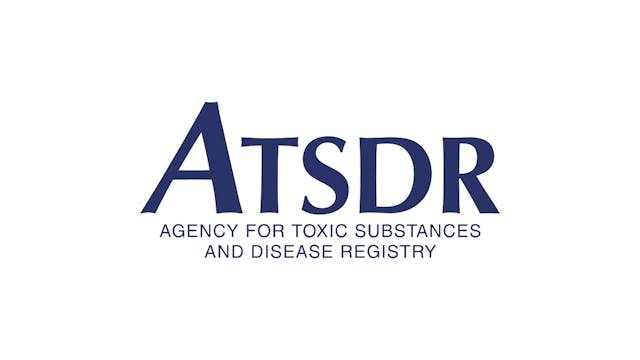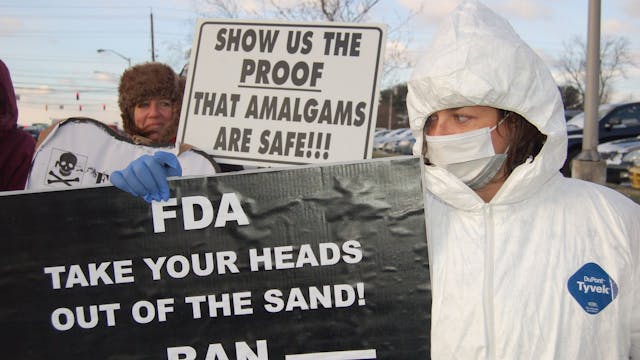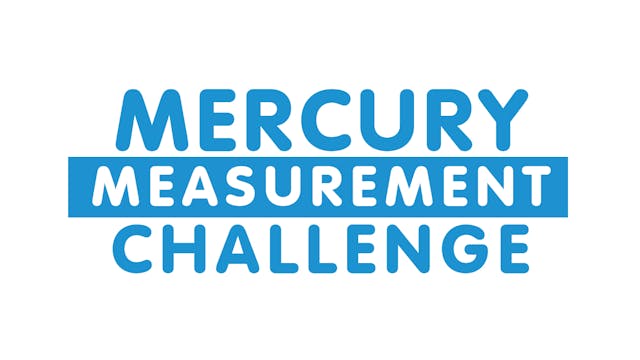Mercury Risk assessment results, everyone over safe dose
Evidence of Harm + Bonus Material
•
3m 29s
Mercury exposure and risks from dental amalgam in the US population, post-2000
Science of the Total Environment
Mark Richardson, PhD 2011
On December 14 and 15, 2010, the FDA convened a scientific panel to re-examine the issue of mercury exposure from amalgam dental fillings. Mark Richardson, PhD, of SNC Lavallin, Ottawa, Canada, (formerly of Health Canada), provided the scientific panel and FDA regulators with a formal risk assessment using the latest information from the CDC's NHANES dataset.
Science of the Total Environment (2011)
"Mercury exposure and risks from dental amalgam in the US population, post-2000"
Dental amalgam has been identified as the largest single source of continuous Hg exposure for members of the general population who possess amalgam fillings (WHO, 1991; Heath Canada, 1996). Previous assessments of dental amalgam have demonstrated that the dose of Hg received as a result of this dental material exceeds what is considered to be a safe or reference dose (see Health Canada, 1995; Richardson and Allan, 1996).
The quantity of Hg0 released from amalgamis often referred to as 'minute' (ADA, 2008b; CDA, 2005) or 'very small' (AGD, 2007). However, it is not the dose itself that determines safety, it is how that dose compares to levels considered 'safe' or without anticipated harm that determines whether or not the dose is significant with respect to health concern. Irrespective of quantity, aminute dose can present a risk if the substance is sufficiently toxic and received in sufficient dose to exceed a reference level considered 'safe'.
ABSTRACT:
Dental amalgam is 50% metallic mercury (Hg) by weight and Hg vapour continuously evolves from in-place dental amalgam, causing increased Hg content with increasing amalgam load in urine, faeces, exhaled breath, saliva, blood, and various organs and tissues including the kidney, pituitary gland, liver, and brain. The Hg
content also increases with maternal amalgam load in amniotic fluid, placenta, cord blood, meconium, various foetal tissues including liver, kidney and brain, in colostrum and breast milk. Based on 2001 to 2004 population statistics, 181.1 million Americans carry a grand total of 1.46 billion restored teeth. Children as young as 26 months were recorded as having restored teeth. Past dental practice and recently available data indicate that the majority of these restorations are composed of dental amalgam.
Employing recent US population-based statistics on body weight and the frequency of dentally restored tooth surfaces, and recent research on the incremental increase in urinary Hg concentration per amalgam-filled tooth surface, estimates of Hg exposure fromamalgamfillingswere determined for 5 age groups of the US population. Three specific exposure scenarios were considered, each scenario incrementally reducing the number of tooth surfaces assumed to be restored with amalgam. Based on the least conservative of the scenarios evaluated, it was estimated that some 67.2million Americans would exceed the Hg dose associated with the reference exposure level (REL) of 0.3 μg/m3 established by the US Environmental Protection Agency; and 122.3million Americans would exceed the dose associated with the REL of 0.03μg/m3 established by the California Environmental Protection Agency.
Exposure estimates are consistent with previous estimates presented by Health Canada in 1995, and amount to 0.2 to 0.4 μg/day per amalgam-filled tooth surface, or 0.5 to 1 μg/day/amalgam-filled tooth, depending on age and other factors.
Up Next in Evidence of Harm + Bonus Material
-
The Agency for Toxic Substances and D...
Environmental health scientist, Sue Casteel from The Agency for Toxic Substances and Disease Registry discusses various aspects of mercury toxicity.
-
IAOMT: FDA Scandal Update 2015
IAOMT: FDA Scandal Update 2015
-
IAOMT MERCURY MEASUREMENT CHALLENGE
IAOMT presents the MERCURY MEASUREMENT CHALLENGE to any dentist who is skeptical that mercury is released from mercury amalgam fillings at levels higher than safety.


